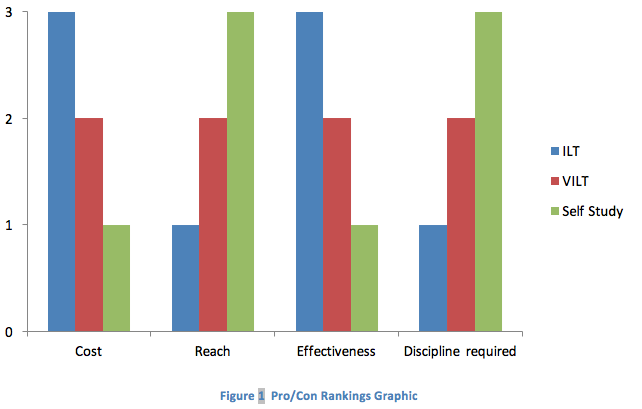
One of the most exciting aspects of working in technology is change, and security, in particular, requires an agile mind. People who are capable of rapidly acquiring knowledge and developing new skills – the proverbial ‘quick studies’ – fare best in this landscape. So, what’s the best way to learn and grow?
Successful on-the-job learning is highly effective since you’re acquiring exactly what you need to get the job done, likely with the help of others who are sharing what they know. (Unsuccessful OJT can be downright disastrous!)
We’re all capable, to some greater or lesser degree, of learning on our own by simply diving in, reading and good old-fashioned trial-and-error. Though that’s rarely the best way to learn, given the amount of long-term focus and motivation it requires. The more complex the topic, the more this is true, and not many technical people have the luxury of focusing on one topic for long.
Additionally, tools, techniques and procedures are not always user-friendly enough to favor a self-guided approach. This is where training comes in. The good news is there are a lot of cybersecurity training options, from free online resources like YouTube, Cybrary.it and Khan Academy to paid vendor, skills and certification training. The price is right with the free options!
Training, however, is a long-time devotee of the GIGO principle, where garbage in = garbage out.
Obviously, highly effective, quality training materials are major contributors to successful skills development. But the more important ingredient is learner investment. A keen, focused mind can salvage a problematic learning situation. The flip side applies just as truly: the inattentive and uninterested can negate the value of what should have been a great training event.
In short, you usually get what you put in. Financially and personally.
So, what type of training – which ‘training medium,’ in formal terms – is best? The answer largely depends on how honest you can be with yourself. As the title implies, my position is strongly in favor of traditional instructor-led training. What does honesty have to do with it? If you can admit to yourself that your attention will wander and you’re not likely to be a very disciplined learner, you can make a wiser decision.
Let’s review why and the three options you have for formal training in order of relative value.

 ILT
ILT
Traditional ILT, where instructor and students interact together in a physical setting, is the veteran champ in training circles. Newer mediums bring greater flexibility and ‘reach’ to the cage in their quest to challenge ILT’s reign (keep reading for more). When complex, technical, hands-on subjects are the prize, ILT works best for most people.
There are powerful synergies available to a group of people working toward a common goal in the same physical space. Students near each other collaborate, assist each other with rough patches and gotchas, and collaboration overcomes individual weaknesses just as it does in highly effective teams. Students share use cases and personal experience, adding a very powerful value-add all instructors long for, that oh-so-valuable real world perspective that makes the subject matter much more approachable and applicable.
The obvious, primary con of ILT, and it’s a doozy, is the travel required to get everyone in the same room. ILT is expensive. There’s no avoiding it. Either the trainer has to visit a common location where students are already present, students have to travel to the trainer, or a mix where everyone meets somewhere in between. Similarly, ILT has limited ‘reach’ since students must be in the training location to benefit.
Many tech trainers and certification prep providers schedule a regular rotation of training events in major cities to extend their reach and ameliorate travel costs by reducing the distance of travel. Some classes are delivered in a blended format where remote students dial into audio/video feeds streamed from the training site, which is a nice (conceptual) segue for the #1 contender.
VILT
One of the excellent opportunities the global Internet provides is a whole new training delivery medium: virtual ILT. For decades before the Internet, video teleconference tried to extend ILT’s reach by broadcasting audio and video feeds to remote sites. But the costs were massive. Hugely expensive VTC rooms still exist in many large, well-funded organizations.
High-quality Internet access affords a better, less expensive solution. Virtual instructor-led classes provide a mostly happy medium with effectively unlimited reach. Budget holders are happy because no one has to travel, participants are happy because they can attend class from anywhere they have solid Internet access, and managers are happy because their people are more available. There’s no lost work time due to travel, and with classes that finish early or start late, students can get some work done before or after class.
Now the somewhat severe cons. Virtual training requires a lot of discipline, as distractions are seemingly unlimited and unavoidable. It’s a matter of time before most students wander off to work, email, YouTube, shopping, etc. All training requires attention and discipline, from students and management alike.
Virtual attendees are way more at risk with distractions a window, phone, or screen away. Add in the instructor’s perennial favorite, when managers are the first to break the sanctity of the ‘unavailable while in class’ status. “Someone has paid for this class, and you might have lobbied for months or even years to get this training, so you have to stay focused! Make the most of our investment!” That manager is usually the first to pull the student away from class to put out fires or solve problems.
In nearly 20 years’ experience teaching thousands of students and tens of thousands of virtual classroom hours, I’d guesstimate my students’ attention rate was 25%, where 100% would be undivided attention from all attendees.
The instructor’s ability to connect meaningfully with students is challenging virtually. You cannot look out to the sea of faces and make the hundred little judgments presenters make in person about who’s ‘getting it,’ lost, confused, or distracted. Further, most people are quiet in online meetings, attention notwithstanding, making virtual instruction the most challenging way to teach. The instructor must find the balance between pulling interaction out of students and hounding them.
The last major challenge is that limited screen ‘real estate’ can be a major difficulty with multiple competing focus areas; a class meeting window, PDF student manuals, and lab window are common. One screen to rule them all does not work. Ideally, participants will have three screens, one for each focus area.
Don’t get me wrong, I like virtual training. All too often, I’m its only defender in training medium discussions. Virtual training offers a great blend of reach, availability and quality.
SELF-STUDY/ELEARNING
Self-study training, not to be confused with simply reading documentation, blogs, or KBs, is an interesting option. Learners follow manuals or self-paced video modules and can either simulate hands-on experience or have live lab environments to practice skills.
It’s cheaper at a minimum because there’s no travel. But I am not a fan. I would never recommend self-study training … unless it’s your only option.
There is no knowledgeable instructor to ask questions of and it requires massive discipline and focus from the student. Another big issue is flawed training material. If the material is not perfect, a virtual impossibility, by the way, the learner is going to struggle.
Those issues combine into a perfect storm of a high failure rate and low quality. Many people switch their mindsets when training, subconsciously I think, as they expect to be led by the hand through the material. That mindset is incompatible with self-study.
Let’s get back to honesty. If you know yourself, know you have the talents to work through issues, can think on your feet instead of letting material or lab issues stymy you, and are certain you’ll get it done, self-study can be effective. Otherwise, look elsewhere.
CONCLUSION
All things being equal, traditional instructor-led training is by the best training medium in terms of overall effectiveness and learner satisfaction. This is especially true of technical, hands-on training. If you give me the same students and course material, I can guarantee a higher quality training event with better learner engagement and more satisfied trainees – as evidenced by course evaluation scores – which adds up leading to more effective professional development.
It’s tough to beat a truly skilled trainer guiding people through a topic the instructor’s well-qualified to deliver. Knowledge is best delivered from one human to another, in person. ILT is king, and that won’t change any time soon.
By: RANDY ESSER
Source: www.tripwire.com

















